1. Calculate the value of V1 and V2.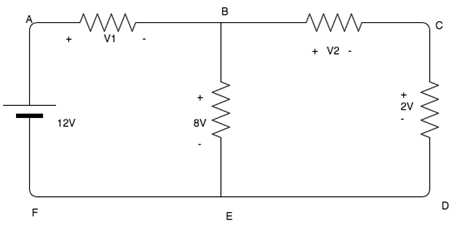
a) 4V, 6V
b) 5V, 6V
c) 6V, 7V
d) 7V, 8V
Explanation: Using KVL, 12-V1-8=0. V1= 4V.
8-V2-2=0. V2=6V.
2. KVL deals with the conservation of?
a) Mass
b) Momentum
c) Charge
d) Energy
Explanation: KVL states that the sum of the potential energy and taken with the right sign is equal to zero, hence it is the conservation of energy since energy doesn’t enter or leave the system.
3. Calculate the voltage across the 10 ohm resistor.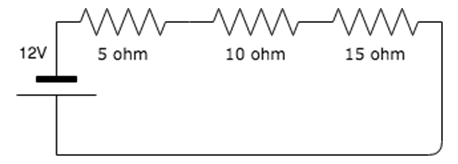
a) 12V
b) 4V
c) 10V
d) 0V
Explanation: Total resistance = 5+10+15 = 30 ohm. Current in the circuit is 12/30 A.
Voltage across 10 ohm resistor is 10*(12/30) = 4V.
4. Find the value of the currents I1 and I2.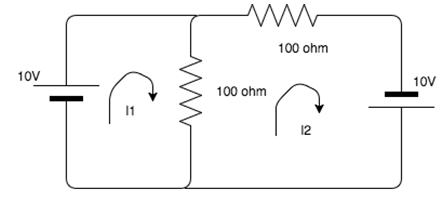
a) 0.3, 0.1
b) -0.1, -0.3
c) -0.3, -0.1
d) 0.1, 0.2
Explanation: Using KVL in loop 1, 10-100 i1=0. i1=0.1A
Using KVL in outer loop, -100i2+20=0 i2=0.2A.
5. The sum of the voltages over any closed loop is equal to __________
a) 0V
b) Infinity
c) 1V
d) 2V
Explanation: According to KVL, the sum of the voltage over any closed loop is equal to 0.
6. What is the basic law that has to be followed in order to analyze the circuit?
a) Newton’s laws
b) Faraday’s laws
c) Ampere’s laws
d) Kirchhoff’s law
Explanation: Kirchhoff’s laws, namely Kirchhoff’s Current Law and Kirchhoff’s Voltage law are the basic laws in order to analyze a circuit.
7. Every____________ is a ____________ but every __________ is not a __________
a) Mesh, loop, loop, mesh
b) Loop, mesh, mesh, loop
c) Loop, mesh, loop, mesh
d) Mesh, loop, mesh, loop
Explanation: According to Kirchhoff’s Voltage Law, Every mesh is a loop but every loop is not a mesh. Mesh is a special case of loop which is planar.
8. What is the voltage across the 5 ohm resistor if current source has current of 17/3 A?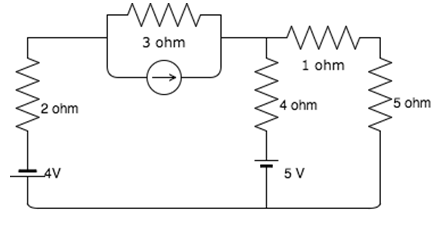
a) 2.32V
b) 5.21V
c) 6.67V
d) 8.96V
Explanation: Assuming i1 and i2 be the currents in loop 1 and 2 respectively. In loop 1, 4+2i1+3(i1-17/3)+4(i1-i2)+5=0
In loop 2, i2(4+1+5)-4i1-5=0 =>-4i1+10i2=5.
Solving these equations simultaneously i2=1.041A and i1=1.352A
V=i2*5= 5.21V.
9. Calculate VAB.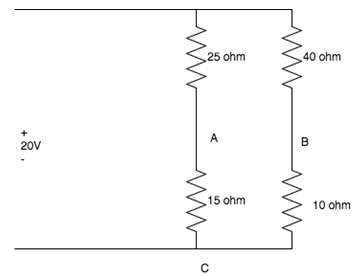
a) 3.5V
b) 12V
c) 9.5V
d) 6.5V
Explanation: For branch A: VAC=15*20/(25+15)=7.5V
For branch B: VBC= 10*20/(10+40)=4V
Applying KVL to loop ABC:
VAB+VBC+VCA=0
VAB=3.5V.
10. KVL is applied in ____________
a) Mesh analysis
b) Nodal analysis
c) Both mesh and nodal
d) Neither mesh nor nodal
Explanation: Mesh analysis helps us to utilize the different voltages in the circuit as well as the IR products in the circuit which is nothing but KVL.